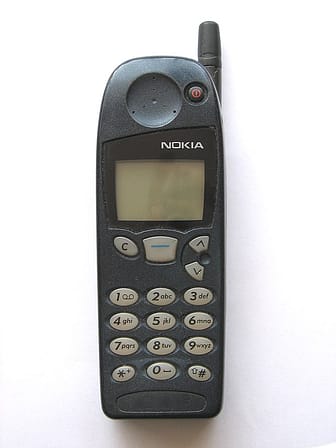The Early Cell Phones: Why Calls Dropped and Why You Could Hear Other People’s Conversations

For those who grew up with modern smartphones, it can be hard to imagine a time when cell phones were clunky, unreliable devices. In the early 2000s, cell phones were a luxury item, and they had several quirks that made them less than ideal. Two of the most common issues were dropped calls and the ability to hear other people’s conversations while talking on the phone. In this blog post, we’ll explore why these issues occurred and how voice was sent over cell phone networks back then.
Why Early Cell Phones Dropped Calls
If you were using a cell phone in the early 2000s, you likely experienced dropped calls on a regular basis. This was due to a combination of factors, including limited coverage areas, network congestion, and the technology used to transmit voice over the network. In the early days of cell phones, networks used a technology called Time Division Multiple Access (TDMA) to send voice over the airwaves. TDMA allowed multiple users to share a single frequency by dividing it into time slots. However, this also meant that if the network became congested, voice quality would suffer, and calls would be more likely to drop.
Why You Could Hear Other People’s Conversations
Another common issue with early cell phones was the ability to hear other people’s conversations while talking on the phone. This was due to the fact that early cell phones used analog signals to transmit voice over the network. Analog signals are continuous waves that are vulnerable to interference, and they can easily bleed into nearby frequencies. This meant that if two people were talking on their cell phones in close proximity, it was possible for their conversations to bleed into each other’s phones.
How Voice Was Sent Back Then
As mentioned earlier, early cell phones used analog signals to send voice over the network. When you made a phone call, your voice was converted into an analog signal and transmitted over the airwaves to the nearest cell tower. The cell tower then relayed the signal to the nearest base station, which in turn routed the call to its final destination. Because analog signals are continuous waves, they require more bandwidth to transmit than digital signals, which are discrete pulses. This made it more difficult for early cell phone networks to handle large numbers of users, leading to dropped calls and poor call quality.
The early days of cell phones were characterized by several quirks and limitations that are hard to imagine in today’s world of modern smartphones. Dropped calls and the ability to hear other people’s conversations while talking on the phone were common issues due to the limited coverage areas, network congestion, and the analog technology used to transmit voice over the network. As cell phone technology has evolved, these issues have largely been eliminated, and cell phones have become an indispensable tool in our daily lives.